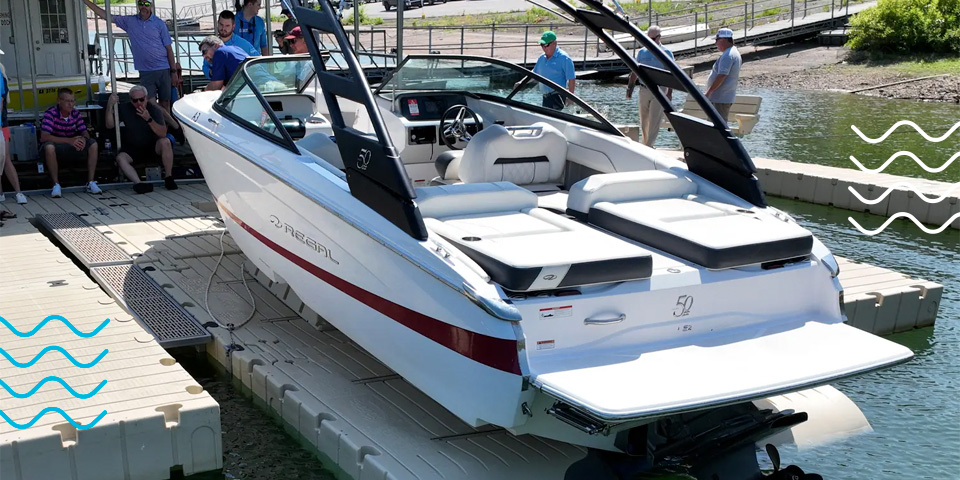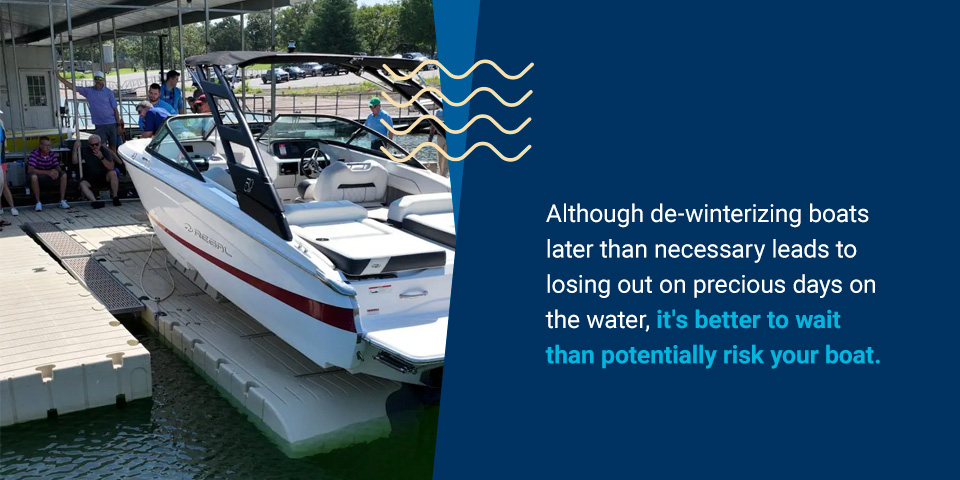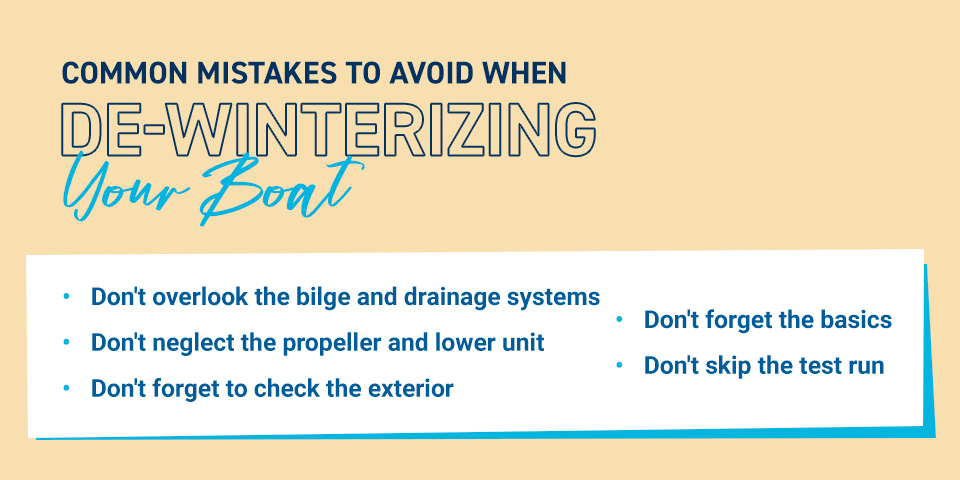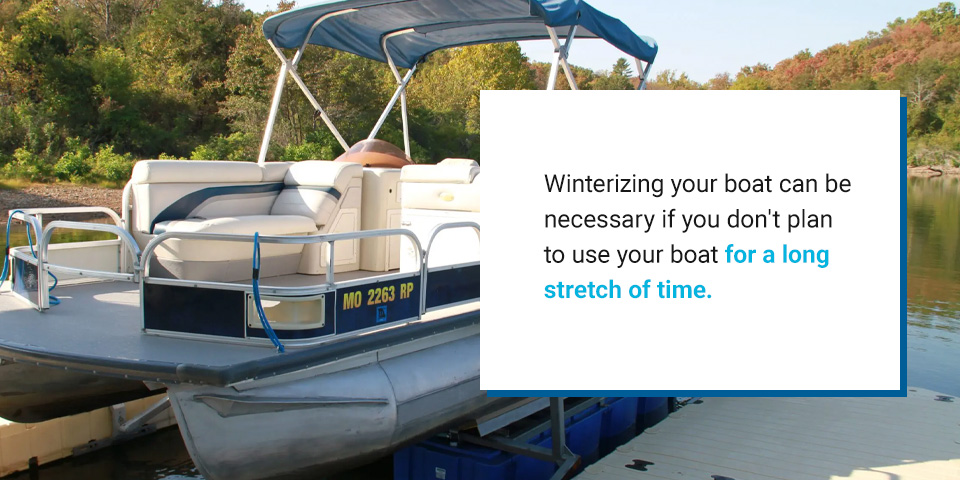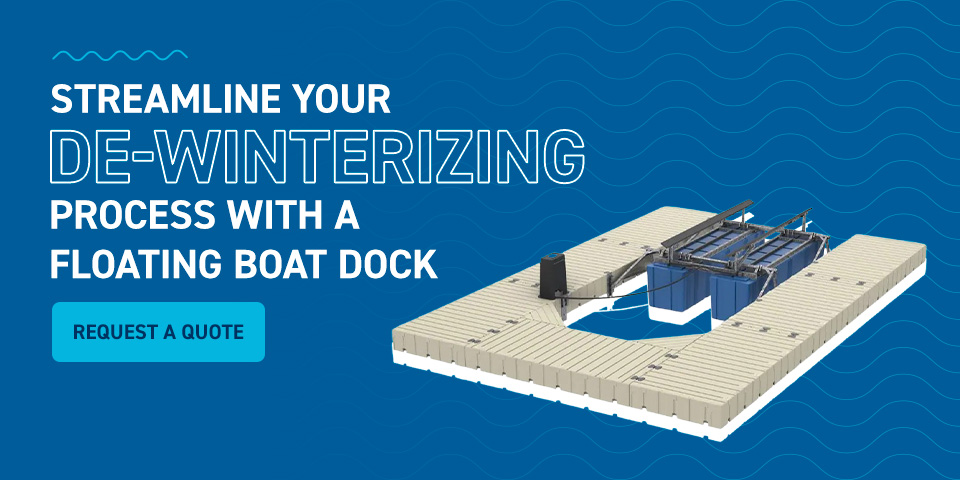Filters
How to Prepare Your Boat for Spring: De-Winterizing Tips and Tricks
When warmer weather approaches, you’re likely eager to be back on the water, ready for times of adventure and relaxation with family, friends or visitors. However, before you can enjoy the water again, you may need to de-winterize your boat, which involves taking it out of winter storage and getting it ready for the water. This guide covers the importance of de-winterizing your boat and how to de-winterize a boat step by step.
The Importance of Wintering and De-Winterizing Your Boat
While winterizing your boat is crucial to prevent damage during the cold weather, de-winterizing helps you prepare your boat after being out of use. These processes are important for your boat’s protection — they help prevent potential damage from weather exposure and help you maintain your boat correctly. If you fail to winterize your boat, you likely will be unable to take it out come spring due to damage, and de-winterizing improperly could lead to a poorly functioning boat.
The Basics of Winterizing Your Boat
Before understanding how to de-winterize your boat, it can be helpful to understand the process that makes it necessary — winterizing your boat. If you’re unsure how to de-winterize a boat, you may also be unfamiliar with winterizing your boat. This knowledge can give you a complete picture of how both techniques work together to protect your boat throughout the seasons.
When water naturally enters a boat and its systems, it can become a hazard when temperatures drop. As water freezes, it expands, and any water inside of parts like the pumps, lines or freshwater tanks can be permanently damaged. If you live in a cold climate, it is essential to get into the habit of winterizing your boat for its longevity and peace of mind.
Keep in mind that every boat has make- and model-specific guides that help you keep your boat in the best possible shape. Always consult with your manufacturer’s guidance before you start the wintering or dewinterizing processes. Doing so may also be important to maintain your warranty.
Here are the basic steps involved with winterizing your boat.
- Draining water: Drain any water inside the boat’s systems, including water in the hoses, lines, tanks, freshwater pumping systems and cooling systems. Ensure you flush the systems out thoroughly and that all other water systems are empty.
- Anti-freeze: Use biodegradable or non-toxic anti-freeze through all of your boat’s systems.
- Corrosion protection: Apply corrosion protection to the engine. If you live in an area with salt water, using a specialized product to remove salt residue around your boat is also helpful to prevent corrosion.
- Draining cooking gas: If relevant, drain any cooking gas by burning the gas or disconnecting the hose, turning on the burners and lighting the stove so that you release the remaining gas in the line.
- Changing oil: Change the oil for the outdrive and lower unit.
- Draining the fuel: Check the fuel filters. Then, drain your boat of fuel and fill the tank with a stabilizer. This product helps stop moisture from forming. Be sure to use the right kind of stabilizer for your system.
- Batteries and drain plugs: You must disconnect and clean all batteries before storing them correctly. Remove the drain plugs.
- Storage: Once every step is complete, cover your boat and place it into dry storage for the winter season.
When Is It Safe to De-Winterize Your Boat?
When it comes to de-winterizing your boat, timing is everything. If you start de-winterizing too early, an unexpected freeze may occur, potentially causing damage to your boat. Although de-winterizing boats later than necessary leads to losing out on precious days on the water, it’s better to wait than potentially risk your boat. These are some extra resources and tips you can use to know when the best time to de-winterize is:
- Spring freeze data: Consider checking maps that outline past spring freeze data — you can use that information to better predict when the last freeze will happen. While the last spring freeze may happen earlier or later than indicated by past years, it’s still helpful to know a general time when you can expect the last freeze to occur.
- Water freezing temperatures: While water will generally start to freeze when the weather dips below 32 degrees Fahrenheit, saltwater or water with impurities starts freezing at 28 degrees Fahrenheit. Additionally, water will not freeze solid unless it stays below freezing temperature for several days. It’s important to ensure the weather is consistently above freezing before you de-winterize.
How to De-Winterize a Boat
When the weather is consistently warmer and you’re past the final spring freeze for the year, it’s finally time to take your boat out of storage and get it ready for days on the water. The steps to de-winterize a boat involve many components, all of which are crucial to make sure your boat is prepared for use. Take your time when working through them so you can avoid potential mistakes.
Mechanical and System Checks
These mechanical checks focus on de-winterizing the engine and some of the boat’s systems:
- Check the engine fluid levels, outdrive oil, steering fluid and coolant. Replace the oil and oil filters, and add oil additives when changing your oil. Complete your regular engine checks to assess whether your engine is still operating correctly.
- Your cooling system will be empty from winterizing your boat. Before you refill it, carefully inspect the fuel line for any cracks or holes.
- Clean the distributor, which tends to corrode during the winter. Remove the cap, clean it, and then make sure the connections are hooked back on securely.
- Assess all water pumps.
Electrical Inspections
Remember to conduct the following electrical inspections:
- Batteries naturally drain, even if you have not used them in a while. Start your electrical checks by fully charging your batteries and cleaning the cable ends and terminals.
- Use a battery tester to check the volts and amps and compare the numbers against your manufacturer’s standards. You will need to replace the battery if it isn’t holding a charge.
- Top up the battery’s water levels. Use distilled water only.
- Check all your controls, switches and knobs to ensure all electrical systems are working correctly. Include the helm and cabin switches in your check.
Safety Gear and Equipment
Safety is everything out on the water, and it is imperative for you and your passengers. Make safety gear and equipment checks a standard part of your de-winterizing routine. A safety gear and equipment check can include the following:
- Verify the presence and condition of life jackets and fire extinguishers.
- Update your safety equipment if necessary. Make sure you have a first aid kit, throwable flotation devices, visual distress signals, sound signaling devices, navigation lights, and a VHF radio and cell phone on board in case of emergency.
- Check the anchor and dock lines for wear and tear.
Common Mistakes to Avoid When De-Winterizing Your Boat
Whether it’s your first time de-winterizing a boat or you just need a quick refresher, you’ll want to look out for common mistakes as you de-winterize:
- Don’t overlook the bilge and drainage systems: Remember to clean and inspect the bilge pump — the pump that removes excess water from the bottom of the inside of the hull — and hoses. Make sure the switch is working, the battery is charged and on, there is no debris in the bilge and the outlet hoses are in order.
- Don’t neglect the propeller and lower unit: Inspect the propeller for damage or wear and tear before you get back on the water. Also, check the lower unit for leaks and ensure it’s adequately lubricated.
- Don’t forget to check the exterior: While it’s unlikely that the boat’s hull will become damaged in winter storage, anything can happen, and a damaged hull leads to an increased risk of sinking. Additionally, inspect your boat trailer, as well as the tires, brakes, suspension, hitch, jack and winch.
- Don’t forget the basics: Clean, paint, polish and wax your boat as part of this maintenance run.
- Don’t skip the test run: After de-winterizing, give your engines a chance to warm up properly before you go for a short ride. That first use after winter helps you identify and address any issues that may not have been obvious at the dock.
How Boat Lifts Make Winterizing and De-Winterizing Simpler
A boat lift suspends your boat above the water when you don’t use it. For some enthusiasts, dry winter storage isn’t a viable option, and many people choose to keep their boats on the water throughout the colder months. Using a boat lift for your boat forms part of an effective approach to protect your boat in cold weather, making maintenance and the de-winterizing process that much easier.
Other benefits of using a boat lift include:
- Protecting the hull from damage.
- Reducing the chance of corrosion.
- Preventing fouling — performance issues and fuel inefficiency due to marine growth.
If you live in an especially cold area or you’d like to make caring for your boat a simpler process, consider investing in a boat lift for your property. When your boat is suspended above the water, you can confidently winterize it right then and there. Once warm weather arrives, you don’t have to take time to get your boat out of storage — you can complete the de-winterizing steps right at your dock, and then get out on the water when everything is in check.
Frequently Asked Questions About Winterizing and De-Winterizing
Still have questions about the de-winterizing process? Explore a few commonly asked questions and their answers to help you become more informed.
Who Needs to Winterize and De-Winterize Their Boat?
Anyone who lives in or keeps their boat in a location that experiences cold weather should go through each process. If you’re in an area that doesn’t experience freezing winters, you may be able to skip winterizing and de-winterizing your boat.
Still, even if you live in a consistently mild climate, winterizing your boat can be necessary if you don’t plan to use your boat for a long stretch of time — you can protect your engine as a result. Be sure to keep an eye on the weather no matter where you are, as a sudden cold spell could require temporary measures.
When Should You Winterize Your Boat?
Once the weather starts to lower into the 30-degree Fahrenheit range, you’ll want to set aside time to winterize your boat. Depending on where you keep your boat, you may need to winterize as early as October.
Can You Put a Winterized Boat Straight in the Water?
Because winterized boats are prepared for storage and not for use, putting your boat in the water without de-winterizing it could lead to various damage and safety issues. Never skip the de-winterizing process.
How Do You Start Your Boat After Winterization?
Once you’ve gone over all the mechanical, electrical and standard checks, start the engine and let it run for a while to warm it up. If your boat doesn’t want to start after winterizing, you could have a blocked engine exhaust. Reassess your engine checks to help you locate the issue.
What Happens If You Can’t De-Winterize Your Boat?
Since winterizing a boat prepares it for storage, it can remain in storage without issue until you’re ready to de-winterize it. However, you should check on your boat periodically, if possible, to ensure it remains in good condition.
Is De-Winterizing a Boat Expensive?
The cost of de-winterizing your boat will depend on a number of factors, including how cold your region gets, how big your boat is and your boat’s current condition. Generally speaking, de-winterizing a smaller boat in fair condition may cost a few hundred dollars, while bigger boats and yachts may cost a few thousand dollars to winterize and de-winterize.
Streamline Your De-Winterizing Process With a Floating Boat Dock
Both winterizing and de-winterizing keep your boat in the best shape possible so that you enjoy smooth sailing when spring arrives. Having a boat lift can make both processes that much easier, and at EZ Dock, we offer premium boat lifts you can rely on. The Aegis™ Boat Lift is ideal for boats up to 28 feet in length, with the option to fully customize it as needed.
Additionally, we offer high-quality floating dock systems designed using specialized, durable plastic that’s built to last. A floating dock system makes it incredibly simple to dock and access your boat. Plus, they’re low-maintenance, so you don’t have to worry about replacing weathered wooden boards after a harsh winter — you can just de-winterize your boat and head out.
With our premium boat lifts, docks and accessories, you enjoy ease of use that translates to more time on the water. Find an EZ Dock distributor near you, or contact us to request a quote today!

